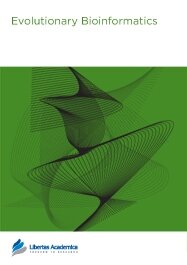

Publication Date: 05 Jan 2012
Type: Methodology
Journal: Evolutionary Bioinformatics
Citation: Evolutionary Bioinformatics 2012:8 79-87
doi: 10.4137/EBO.S8681

Chloroplasts are organelles found in cells of green plants and eukaryotic algae that conduct photosynthesis. Knowing a protein’s subchloroplast location provides in-depth insights about the protein’s function and the microenvironment where it interacts with other molecules. In this paper, we present BS-KNN, a bit-score weighted K-nearest neighbor method for predicting proteins’ subchloroplast locations. The method makes predictions based on the bit-score weighted Euclidean distance calculated from the composition of selected pseudo-amino acids. Our method achieved 76.4% overall accuracy in assigning proteins to 4 subchloroplast locations in cross-validation. When tested on an independent set that was not seen by the method during the training and feature selection, the method achieved a consistent overall accuracy of 76.0%. The method was also applied to predict subchloroplast locations of proteins in the chloroplast proteome and validated against proteins in Arabidopsis thaliana. The software and datasets of the proposed method are available at https://edisk.fandm.edu/jing.hu/bsknn/bsknn.html.
PDF (511.94 KB PDF FORMAT)
RIS citation (ENDNOTE, REFERENCE MANAGER, PROCITE, REFWORKS)
BibTex citation (BIBDESK, LATEX)
XML
PMC HTML
The team at Evolutionary Bioinformatics were fantastic in everyway. They were very accessible and helped with all aspects of getting the paper published in a timely fashion. The immediate online help option available through the website is a great option.

All authors are surveyed after their articles are published. Authors are asked to rate their experience in a variety of areas, and their responses help us to monitor our performance. Presented here are their responses in some key areas. No 'poor' or 'very poor' responses were received; these are represented in the 'other' category.See Our Results
Copyright © 2013 Libertas Academica Ltd (except open access articles and accompanying metadata and supplementary files.)
Facebook Google+ Twitter
Pinterest Tumblr YouTube